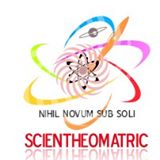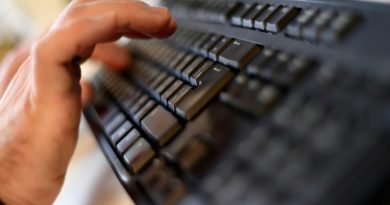SCIENCE-MEDICINE: HÀ NỘI -Awake brain surgery conducted for the first time in Việt Nam
The first awake brain surgery in Việt Nam was performed on a male patient in Hà Nội on January 28. — Photo courtesy of the Việt Nam-Germany Hospital
.
.
HÀ NỘI — A male patient remained fully conscious for a large portion of an operation on his brain tumour, the first such procedure in Việt Nam.
During the six-hour surgery, the man was awake for two hours, singing the Vietnamese national anthem and the popular sing-a-long Như có Bác Hồ trong ngày vui đại thắng (As if Uncle Hồ were here in the Joyous Day of Great Victory).
According to Associate Professor Đồng Văn Hệ, deputy director of the Việt Nam-Germany Friendship Hospital in Hà Nội and head of the hospital’s neurosurgery centre, the patient is 36-year-old Nguyễn Trung K., a businessman in Hà Nội.
.
ADS by Cloud 9:
.
– SPACE RESERVE FOR YOUR ADVERTISEMENT –
.
.
Starting at the beginning of last year, K. randomly experienced headaches of mounting frequency and intensity, but he kept working as usual until the pain culminated in epilepsy-like seizures. After the second episode, his family brought him to Việt Nam-Germany Hospital where he was diagnosed with glioma, one of the most common forms of brain tumour. Glioma develops in the brain and starts in glial cells that support and protect the nerve cells.
The condition typically causes abnormal pressure inside the skull, resulting in headaches, nausea, blurred vision a reduced sense of smell, unusual hormone levels or even partial paralysis and behavioural disorders.
.
ADS by Cloud 9:
.
– SPACE RESERVE FOR YOUR ADVERTISEMENT –
.
.
In April, K. underwent a conventional surgery to have his tumour removed but it proved too large (up to six centimetres in diameter) and located too close to the brain’s functional areas that govern motor skills and language. The doctors decided they could not risk taking out the entire tumour for fear of rendering the patient mute and paralysed.
Coincidentally, the hospital had already planned to conduct an awake surgery and sent doctors overseas to study the method. In June, the hospital invited two Japanese doctors, surgeon Kotoe Kamata and anesthesiologist Takashi Maruyam, to Việt Nam to review whether the hospital was ready to implement the technique.
Aside from proper facilities, medical equipment, skilled doctors and a thorough grasp of the procedure, the patient needs to be able to communicate in English to talk directly with the doctors during the surgery without interpreters.
.
ADS by Cloud 9:
.
– SPACE RESERVE FOR YOUR ADVERTISEMENT –
.
.
After half a year of preparation and looking for the right patient, on the morning of January 28, the two Japanese doctors carried out the surgery on K. as a live example for Vietnamese doctors.
The surgery commenced at 10am and lasted for six hours. K. was unconscious under anesthesia for two thirds of the time so the doctors could work on the tumour cells located in non-critical areas.
“During the surgery, the patient conversed normally with the doctors,” Dr Hệ told the press during yesterday’s briefing. “The patient was asked to count from one to 10, answer basic questions about his name, family and work and perform basic movements like lifting his arms and feet. He was also asked to sing a few songs in succession,”
.
ADS by Cloud 9:
.
– SPACE RESERVE FOR YOUR ADVERTISEMENT –
.
.
The conventional anesthesia method would be quite dangerous in K.’s case because the doctors would not be able to gauge whether (or how much) their work was changing the speaking and motor skills of the patient.
With the patient conscious, the doctors could stop and intervene in time if they notice something going awry.
Dr Hệ said this method did not cost more than putting the patient under conventional anesthesia, but it is more difficult because it requires smooth collaboration between the surgeons, the anesthesiologist and the patient. The anesthesiologist must calculate the right dose so the patient would only be unconscious while doctors treat the non-critical areas.
“The patient must remain calm during every step,” Dr Hệ said. “If the conscious patient panicked and struggled and thrashed about, especially when the skull is open and being worked on by the doctors, the brain could be dislocated and the risks are unimaginable.”
Dr Hệ added that the patient had watched several videos of similar surgeries done in foreign countries to prepare.
The surgery was a success and K. was alert and in good health afterwards, with no sign of complications.
.
ADS by Cloud 9:
.
– SPACE RESERVE FOR YOUR ADVERTISEMENT –
.
.
Awake surgery is no longer a novel concept in countries with developed medicines. For example, Japanese doctors have had 20 years of experience with the procedure, according to Dr Hệ.
The unprecedented case edges Việt Nam closer to a higher level of global medical achievements.
In the near future, similar procedures will be implemented more generally and undertaken by Vietnamese surgeons. — VNS
.
ADS by Cloud 9:
.
– SPACE RESERVE FOR YOUR ADVERTISEMENT –
.
.


 All photographs, news, editorials, opinions, information, data, others have been taken from the Internet..aseanews.net |
All photographs, news, editorials, opinions, information, data, others have been taken from the Internet..aseanews.net | 






